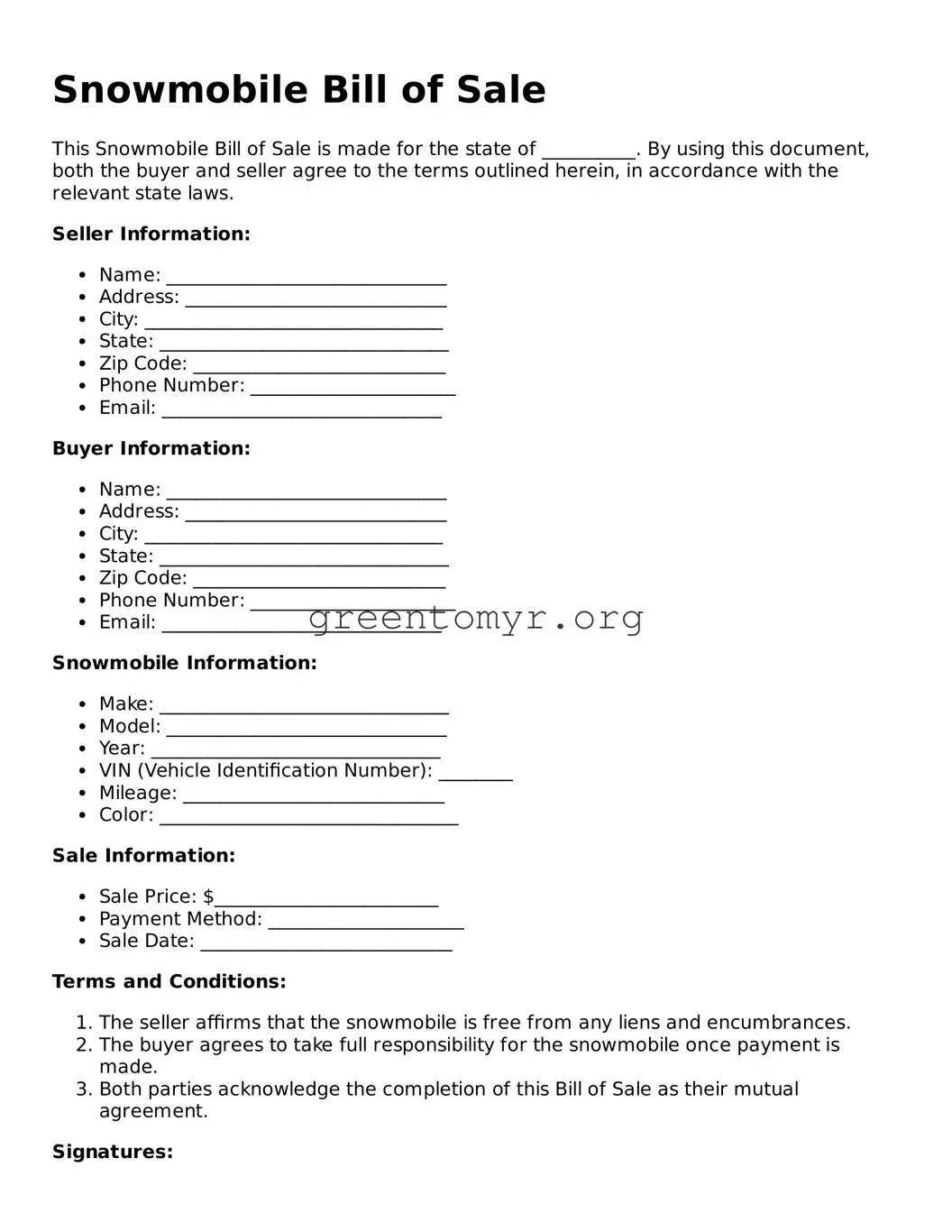When filling out a Snowmobile Bill of Sale, people often make avoidable mistakes that can lead to legal complications later. One common error is failing to include all necessary details about the snowmobile. Make sure to list the make, model, year, and Vehicle Identification Number (VIN) accurately. Omission of this information can create problems for both the seller and the buyer.
Another frequent mistake is not providing complete seller and buyer information. This includes full names, addresses, and phone numbers. Incomplete contact information can hinder future communication, especially if issues arise after the sale.
People sometimes forget to state the selling price clearly. It’s essential to include the full price of the snowmobile to avoid misunderstandings. Leaving out this detail could lead to conflicts later on regarding the agreed amount.
Moreover, sellers occasionally neglect to sign the document. A signature is a formal acknowledgment of the transaction. Without it, the bill of sale may not hold up in court if disputes arise in the future.
Not including the date of the transaction is another mistake. The date signifies when the transfer of ownership takes place, and without it, the credibility of the bill of sale may come into question.
Sometimes, sellers may fail to disclose any existing liens on the snowmobile. Transparency about outstanding loans ensures that the buyer is aware of potential financial obligations tied to the vehicle.
There can also be confusion over payment terms. Clearly outlining how the payment will be made—whether in cash, check, or another method—is crucial. Vague terms could lead to disputes down the line regarding payment execution.
People often forget to include a clause indicating that the vehicle is sold “as-is.” This statement clarifies that the buyer accepts the snowmobile in its current condition and releases the seller from future liabilities related to its performance or any defects.
Another issue arises when individuals use outdated forms. Make sure to obtain the latest version of the Snowmobile Bill of Sale form to comply with current state regulations and ensure all necessary information is covered.
Finally, not retaining a copy of the completed bill of sale is a significant error. Both the seller and the buyer should keep a record of the transaction for their files. This provides necessary documentation if any issues come up later.
